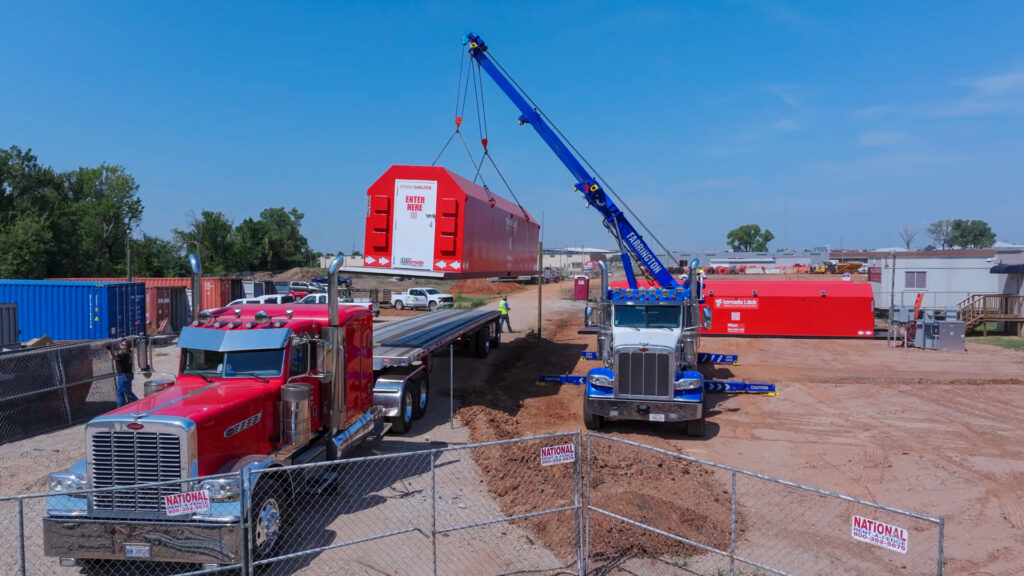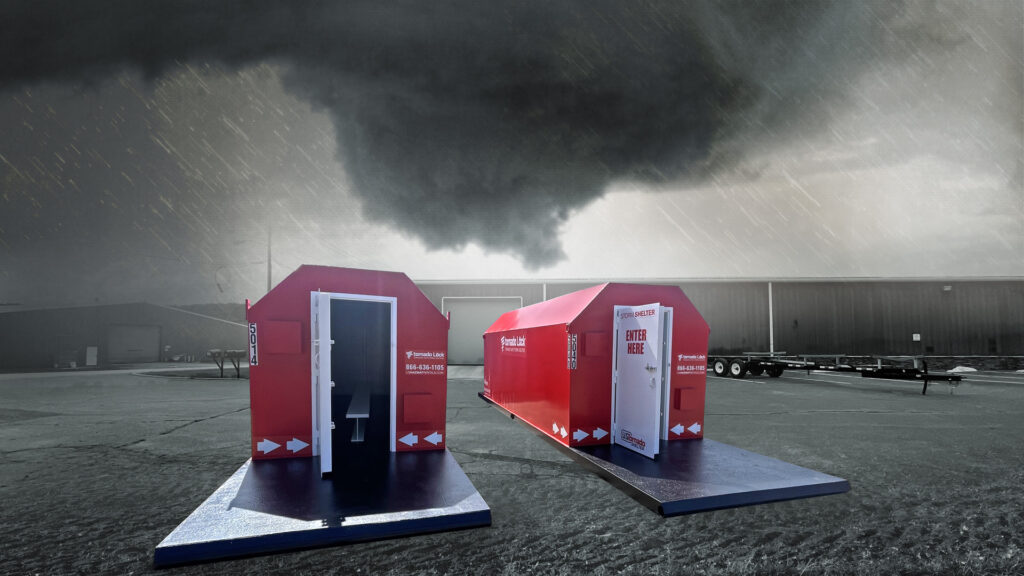Workplace Tornado Shelters
Workplace tornado shelters are meeting a growing demand for safety and compliance. Although the odds of a tornado hitting your jobsite are less than 2 percent, this seemingly negligible risk has a cumulative effect that inevitably lands your jobsite on the “lose a turn” spot at the Game of Life. Tornado Alley is widening, and now includes much of the Southeast and Mid-Atlantic. Moreover, most construction sites are positioned in the Deep South, the nexus for severe weather in the nation.
Jobsite Hazards Are Growing, Protect Your Employees With a Workplace Tornado Shelter
Heavy construction is one of the nation’s most hazardous occupations. Unsecured scaffolding, construction equipment, and distracted workers exacerbate working perils on unsteady ground with an increased propensity for destruction in storm season. Most tornadoes occur in the early afternoon as employees return from lunch, the disadvantage of weary workers paying more attention to the clock than weather alerts. Like OSHA agents, tornadoes often come unannounced and don’t discriminate when teaching hard life lessons. Protecting your workers with temporary steel protection engenders peace of mind and reassurance that they are protected against insurmountable odds.

Heavy industries aren’t the only jobsites needing tornado protection. Businesses, shopping centers, and smaller office complexes remain vulnerable to tornadic activity. Workers jamming to music with earbuds while they bang out spreadsheets are clueless to the nasty weather streaming into town as they scramble to hit their browser’s incognito mode whenever the boss walks by. Moreover, most companies have a zero-tolerance cellphone policy, so otherwise enabled weather notifications are silenced as they type away into oblivion should a tornado touchdown nearby. Even well-informed and vigilant employees, like reporters and meteorologists, can find themselves at the business end of a quickly descending funnel cloud. An Orlando TV meteorologist who was urging residents to shelter from an incoming storm was caught off guard when a tornado hit his station during a live broadcast. Fortunately, the tornado spared the news station from serious damages or injuries.
What are Tornado Procedures in the Workplace?
Company safety managers or human resource officers should develop storm evacuation plans for regular employee rehearsal. In the event of a tornado, employees should shelter in a small, windowless room or hallway while avoiding windows, doors, and exterior walls. Workers should never attempt to flee a tornado in their car or shelter in wide-open areas. Superior tornado protection requires a steel solution. Our rapidly-deployable mobile workplace tornado shelters give harried workers the breathing room for safe and effective evacuation without draining your bottom line. Project managers can easily locate temporary tornado shelter rentals in an easily accessible corridor away from daily operations but close enough for a prompt response.
Do Above-Ground Tornado Shelters Actually Work?
Above-ground tornado shelters are a practical solution for a growing weather dilemma. We’ve diligently researched disturbing, yet growing storm trends, and best building practices in engineering steel fortified protection without superfluous upcharges. We engineer our industry-leading tornado shelters with 1/4″ steel paneling and fortified steel welds, offering maximum protection against 250-mile-per-hour winds. Furthermore, our EF-5 Rated Tornado Shelters meet FEMA, OSHA, IBC and ICC-500 storm shelter requirements and compliance standards.
Where are Workplace Tornado Shelters Required?

Although not federally required, the IBC mandates workplace tornado shelters be included in every company’s jobsite safety plan. While it’s extremely rare, there are a few isolated events when workers have succumbed to injuries in a tornado shelter, although these incidents were more related to improper application or an unsecured door allowing a structural breach. Moreover, workplace tornado shelters give workers provide better protection than ad hoc shelters, such as mobile work trailers, portable bathrooms, and work trucks.
